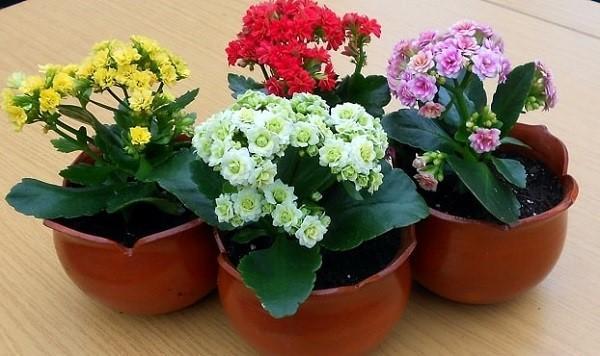Growing at home Kalanchoe tree of life
 Kalanchoe not only very beautiful, but also extremely useful plant. The flower has more than 200 species, in which the healing effect is expressed to varying degrees: some varieties are valued for decorativeness and abundant flowering, while others are not so attractive outwardly, but they have unique abilities in the treatment of various diseases.
Kalanchoe not only very beautiful, but also extremely useful plant. The flower has more than 200 species, in which the healing effect is expressed to varying degrees: some varieties are valued for decorativeness and abundant flowering, while others are not so attractive outwardly, but they have unique abilities in the treatment of various diseases.
The plant itself belongs to the Tolstyankov family and in translation means "thick". The leaf plates of the flower have a thickened structure, they are elastic, juicy and filled with liquid, that is, medicinal juice. Thanks to this, the flower is also called the Tree of Life. Regardless of what kind of Kalanchoe a flower represents, the basic principles of growing and caring for a plant are almost the same for them.
How to care for Kalanchoe?
For the active development of the flower, it is necessary to provide comfortable conditions:
- Lighting... The Kalanchoe feels best in diffused light. Brown spots (burns) appear on the leaves from direct sunlight. But flowering varieties in winter, on the contrary, should be placed closer to the light or provide them with additional lighting so that the leaves do not lose their rich color.
- Temperature... Absolutely unpretentious Kalanchoe can easily endure a short stay outside on hot summer days. In addition, the flower pot can already be placed on the balcony when the temperature warms up to 10 degrees Celsius. But still the recommended temperature for growing Kalanchoe is from 12 to 25 degrees.
- Watering... Like any succulent, the flower has water reserves in succulent leaves, so it does not require frequent watering. It is simply necessary not to allow the soil to dry out completely, but the plant will not survive an excess of moisture and stagnant water. This is especially important in winter, then watering should be reduced to once every 2 weeks.
- Air humidity and spraying... Rooms with high humidity should be avoided. For the same reason, the Kalanchoe does not need frequent spraying. Occasionally, you can wash off the dust from the leaves, but it is better to wipe them with a damp sponge.
- Top dressing... Flowering plant species must be fed once a month with special complex fertilizers, the rest of the varieties - with fertilizers for succulents. In winter, the Kalanchoe does not need feeding.
To form a beautiful bush, it is recommended to pinch the flower at the beginning of summer, removing 2/3 of the length of the adult shoot.
Types of Kalanchoe that are grown at home
On windowsills, you can most often find the following plant varieties:
- Kalanchoe Degremona (Living tree). Decorative and leafy flower. It has a straight stem, on which there are triangular elongated leaves with a serrated edge. A characteristic feature of the variety is the formation of daughter leaves with roots between the teeth of the leaf plate. The plant reproduces with them.
- Kalanchoe Blossfeld. A low, compact shrub with rounded leaves. Blooms profusely, inflorescences can be simple or double, painted in various colors.